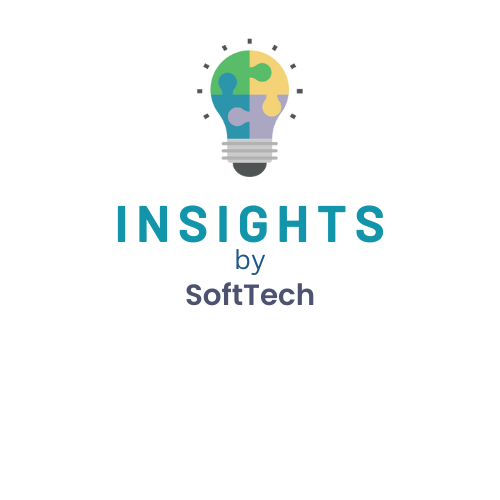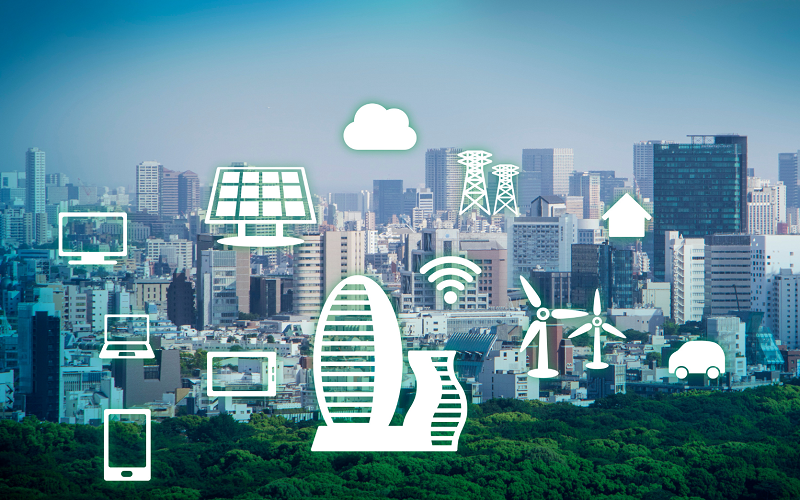Last Updated on November 23, 2023 by softtech
Abstract
The construction industry is undergoing a profound transformation with the advent of digital twin technology. Digital twins, virtual representations of physical assets, are revolutionizing the way buildings and infrastructure are designed, constructed, and operated. In the pursuit of achieving net-zero emissions, these virtual prototypes offer unprecedented opportunities to optimize energy efficiency, reduce waste, and enhance sustainability throughout the entire lifecycle of a construction project. This white paper explores the potential of digital twins in advancing net-zero construction, focusing on how virtual prototyping can enable smarter decision-making, streamline collaboration, and accelerate progress towards a more sustainable future.
1. Introduction
The concept of a digital twin involves creating a real-time digital replica of a physical object, process, or system. In the context of construction, a digital twin encompasses a detailed virtual model of a building or infrastructure project, encompassing its design, construction, operation, and eventual decommissioning. With the global imperative to mitigate climate change and achieve net-zero emissions, the construction industry faces both challenges and opportunities. Integrating digital twin technology into the construction process can significantly contribute to these efforts by enabling better-informed decisions, more efficient resource utilization, and enhanced sustainability.
2. The Role of Digital Twins in Net Zero Construction
2.1 Virtual Prototyping for Sustainable Design
Digital twins facilitate the exploration of diverse design scenarios before physical construction begins. By simulating and analyzing different materials, layouts, and systems, stakeholders can identify the most energy-efficient and environmentally friendly options. This virtual prototyping minimizes the need for resource-intensive physical iterations, reducing waste and optimizing energy performance.
2.2 Real-Time Monitoring and Optimization
During construction, digital twins provide real-time insights into progress and resource utilization. Sensors and data streams integrated into the physical project continuously update the digital twin, enabling project managers to monitor energy consumption, material usage, and emissions. This data-driven approach allows for immediate identification of inefficiencies and deviations from sustainability goals, facilitating prompt corrective actions.
2.3 Predictive Maintenance and Lifecycle Management.
The benefits of digital twins extend beyond construction. Once a structure is operational, the digital twin continues to serve as a valuable tool for predictive maintenance. By analyzing performance data and identifying potential issues before they escalate, building operators can ensure optimal energy performance and minimize downtime. Additionally, digital twins support informed decision-making regarding renovations, retrofits, and eventual decommissioning, promoting sustainable practices throughout the building’s lifecycle.
3. Enabling Factors for Digital Twin Implementation
3.1 Advanced Data Collection and Integration
Effective digital twins rely on accurate and comprehensive data collection. Advanced technologies such as Building Information Modeling (BIM), Internet of Things (IoT) sensors, and drones enable the capture of detailed information about the construction site, materials, and ongoing operations. Seamless integration of these data sources ensures that the digital twin remains an accurate reflection of the physical reality.
3.2 High-Performance Computing and Simulation
Creating and operating a digital twin demands substantial computational resources. High-performance computing enables complex simulations and analyses, from energy performance assessments to structural integrity tests. As computing power continues to increase, the fidelity and capabilities of digital twins will expand, allowing for more accurate predictions and optimizations.
3.3 Interoperability and Collaboration
The construction process involves numerous stakeholders, including architects, engineers, contractors, and facility managers. Effective collaboration requires interoperability between different software platforms and disciplines. Open standards and data exchange protocols are crucial for ensuring that information can seamlessly flow between various phases of a construction project, from design to operation.
4. Future Potential: Accelerating Net Zero Construction with Digital Twins
4.1 Urban Planning and Smart Cities
Digital twins have the potential to revolutionize urban planning and the development of smart cities. By creating comprehensive virtual replicas of entire urban areas, city planners can simulate various scenarios for infrastructure, transportation systems, and energy networks. This enables them to optimize energy consumption, reduce carbon emissions, and enhance overall sustainability. Digital twins can also facilitate citizen engagement by providing a platform for interactive participation in urban development decisions.
4.2 Offshore Renewable Energy Infrastructure
The deployment of offshore wind farms and other renewable energy structures can be significantly enhanced through digital twin technology. Virtual prototyping allows for thorough analysis of factors such as wind patterns, tidal currents, and structural integrity. By simulating different design options and operational conditions, engineers can optimize the layout and performance of offshore structures, maximizing energy output while minimizing environmental impact.
4.3 Disaster Resilience and Recovery
Digital twins can play a crucial role in enhancing the resilience of infrastructure to natural disasters and climate-related events. By creating virtual replicas of critical facilities such as hospitals, bridges, and power plants, emergency responders and planners can simulate disaster scenarios and develop effective response strategies. Digital twins also facilitate post-disaster recovery by providing real-time data for assessing damage, prioritizing repairs, and ensuring the efficient allocation of resources.
4.4 Sustainable Materials Innovation
The construction industry’s shift towards net-zero emissions requires innovative approaches to materials sourcing and usage. Digital twins can aid in the development and integration of sustainable materials, allowing designers and engineers to model the environmental impact of different construction materials and techniques. This enables the selection of materials with lower carbon footprints and higher durability, contributing to the overall sustainability of the built environment.
4.5 Circular Economy Implementation
Digital twins can facilitate the adoption of circular economy principles within the construction sector. By tracking the lifecycle of building components and materials through virtual representations, stakeholders can optimize reuse, recycling, and repurposing efforts. Digital twins provide a platform for managing the flow of materials, minimizing waste, and extending the lifespan of construction assets.
5. Challenges and Future Directions
While the potential applications of digital twins in advancing net-zero construction are promising, challenges remain. These include the need for standardized data formats, interoperability between different digital twin platforms, and addressing concerns related to privacy and data security. Additionally, as digital twin technology becomes more widespread, ensuring accessibility and equitable implementation across different regions and economic contexts will be essential.
6. Conclusion
The digital twin revolution holds immense promise for accelerating progress towards net-zero construction and a more sustainable future. By leveraging the power of virtual prototyping, advanced data analytics, and collaborative decision-making, stakeholders can design, construct, and operate buildings and infrastructure with a heightened focus on energy efficiency, resource optimization, and environmental stewardship. As the technology continues to evolve and overcome challenges, digital twins are poised to drive transformative change in the construction industry, contributing to global efforts to achieve a net-zero built environment.
About Author
Olivia Jones
Technology Specialist
Olivia is a highly skilled and experienced Technology Specialist with 10+ years of hands-on expertise in the rapidly evolving field of technology. She has a proven track record of successfully implementing and managing a wide range of technological solutions, ensuring optimal performance and efficiency. Olivia possesses a deep understanding of industry trends and emerging technologies, enabling her to provide strategic guidance and drive innovation within organizations. With a strong focus on problem-solving, she consistently delivers tailored solutions that align with business objectives while maximizing productivity and cost-effectiveness.
About SoftTech Engineers
A leading IT company (www.softtech-engr.com) facilitating business and technology transformation across the AEC industry through innovative software products and solutions. Equipped with 25+ years of deep domain expertise and industry knowledge, SoftTech has helped more than 4500 clients & government organizations, with more than 25000 users in India and around the world to gain a competitive edge and lead from the front in the industry.

